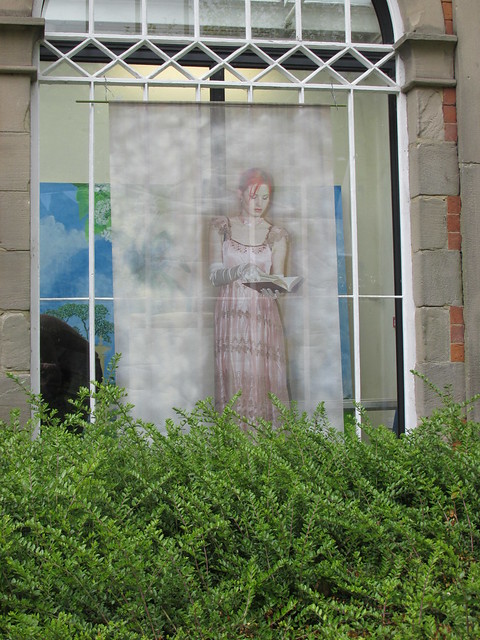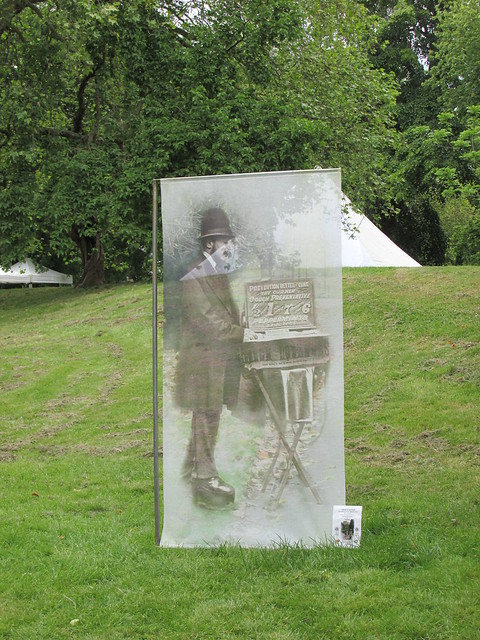 |
| One of Howie's merged photos |
For one day only, people were invited to dress in Victorian costume and take a picnic to the park, to see the ghosts and be part of its ongoing history. There was a good turnout, and people of all ages and races joined in. Derby is a multi-cultural city and the history of some ethnic groups in the town is as long as the park's.
 The arboretum was the brainchild of industrialist Joseph Strutt. The silk merchant and cotton mill owner gave the land to the town in 1840 because he was concerned about the lack of fresh air for residents of the increasingly industrialised area. Ironically, pollution levels killed many of the 1,000-plus species that were planted in the park.
The arboretum was the brainchild of industrialist Joseph Strutt. The silk merchant and cotton mill owner gave the land to the town in 1840 because he was concerned about the lack of fresh air for residents of the increasingly industrialised area. Ironically, pollution levels killed many of the 1,000-plus species that were planted in the park.Strutt wanted the arboretum to be both a place for exercise and recreation, and educational. His instructions were that no species was to be repeated across the 11 acres, to encourage people to walk all the way around it.
The layout was designed by Joseph Claudus Loudon, a 19th century horticulturalist who had strong views on social responsibility. He felt rich factory owners of his time had a duty to look after their workers, and had already expressed a desire to create a public park.
The current exhibition clearly attracted a lot of attention and local people were engaged with it. Wandering around the park, seeing the translucent figures of Derby residents past and present walking alongside, was a great way to consider the park in a new light. Many of the visitors to the picnic event had never been to the park before.
 |
| He's offering peppermint cough preventative! |
By the end of the 20th century vandalism and neglect (and WWII bombing) had taken their toll on the arboretum and it was very much the worse for wear. However, a Heritage Lottery Fund grant enabled the city council to make an investment in it. Much of the park was restored, including a replica of the Florentine Boar (see photo above). According to an information panel in the park, Strutt commissioned sculptor W J Coffee to make a ceramic replica of a boar statue to be found in Florence, Italy.
Strutt originally had the work at his own home, but donated it to the park for the official opening. The boar survived until a bombing raid in 1941 caused severe damage, then it was taken away. The current boar is a bronze replica, of the replica!

